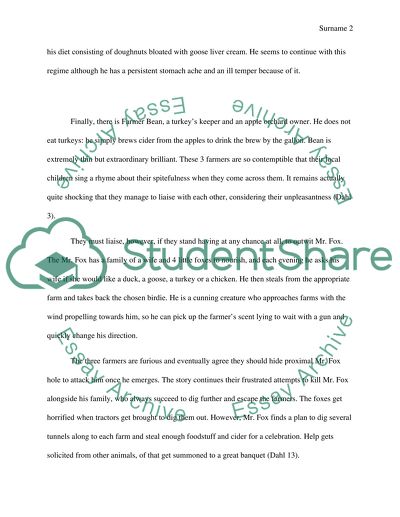Cite this document
(“Fantastic Mr. Fox by Ronal Dahl Essay Example | Topics and Well Written Essays - 2000 words”, n.d.)
Retrieved from https://studentshare.org/english/1451489-first-choose-a-children-s-text-to-analyze
Retrieved from https://studentshare.org/english/1451489-first-choose-a-children-s-text-to-analyze
(Fantastic Mr. Fox by Ronal Dahl Essay Example | Topics and Well Written Essays - 2000 Words)
https://studentshare.org/english/1451489-first-choose-a-children-s-text-to-analyze.
https://studentshare.org/english/1451489-first-choose-a-children-s-text-to-analyze.
“Fantastic Mr. Fox by Ronal Dahl Essay Example | Topics and Well Written Essays - 2000 Words”, n.d. https://studentshare.org/english/1451489-first-choose-a-children-s-text-to-analyze.


